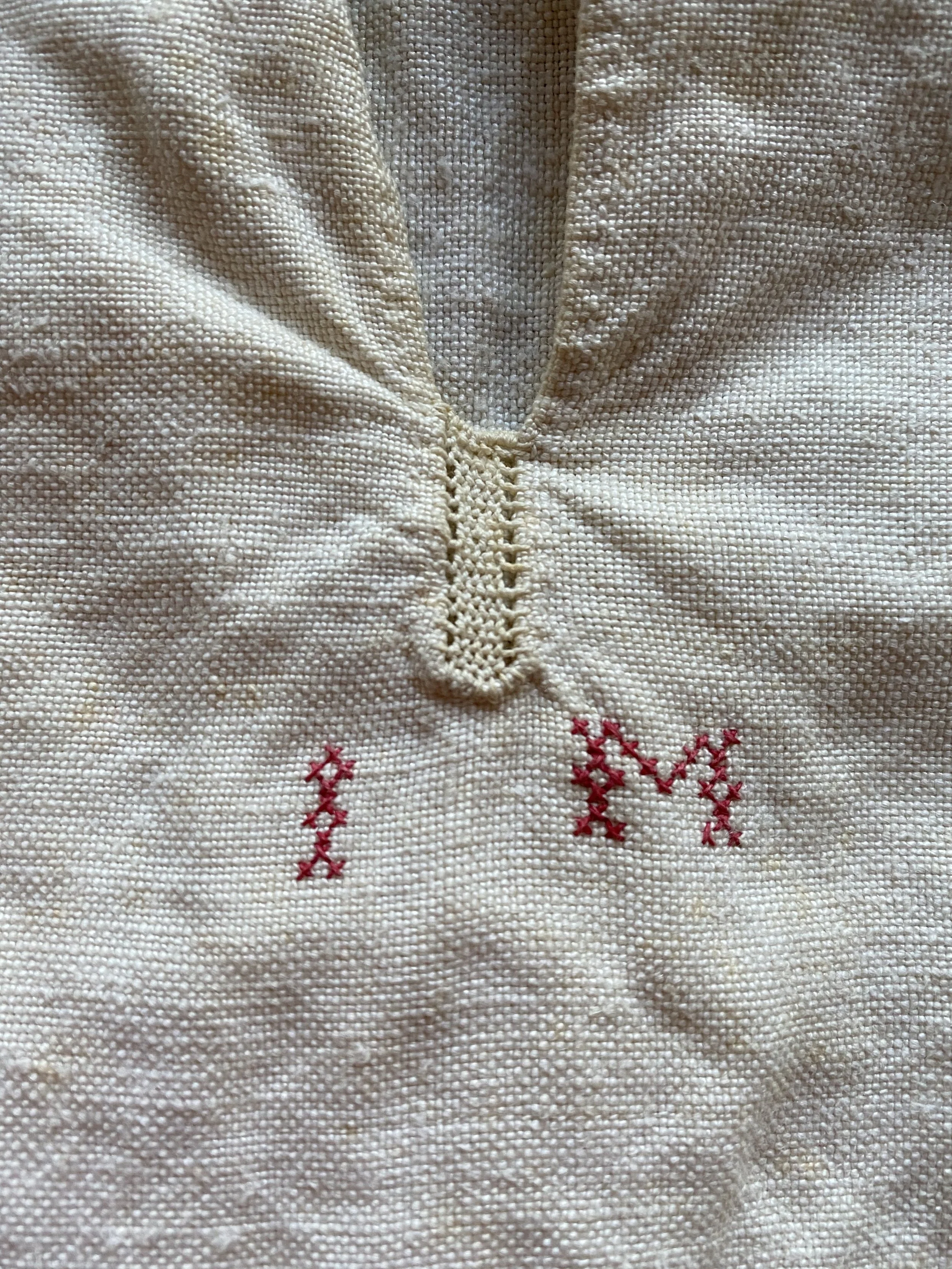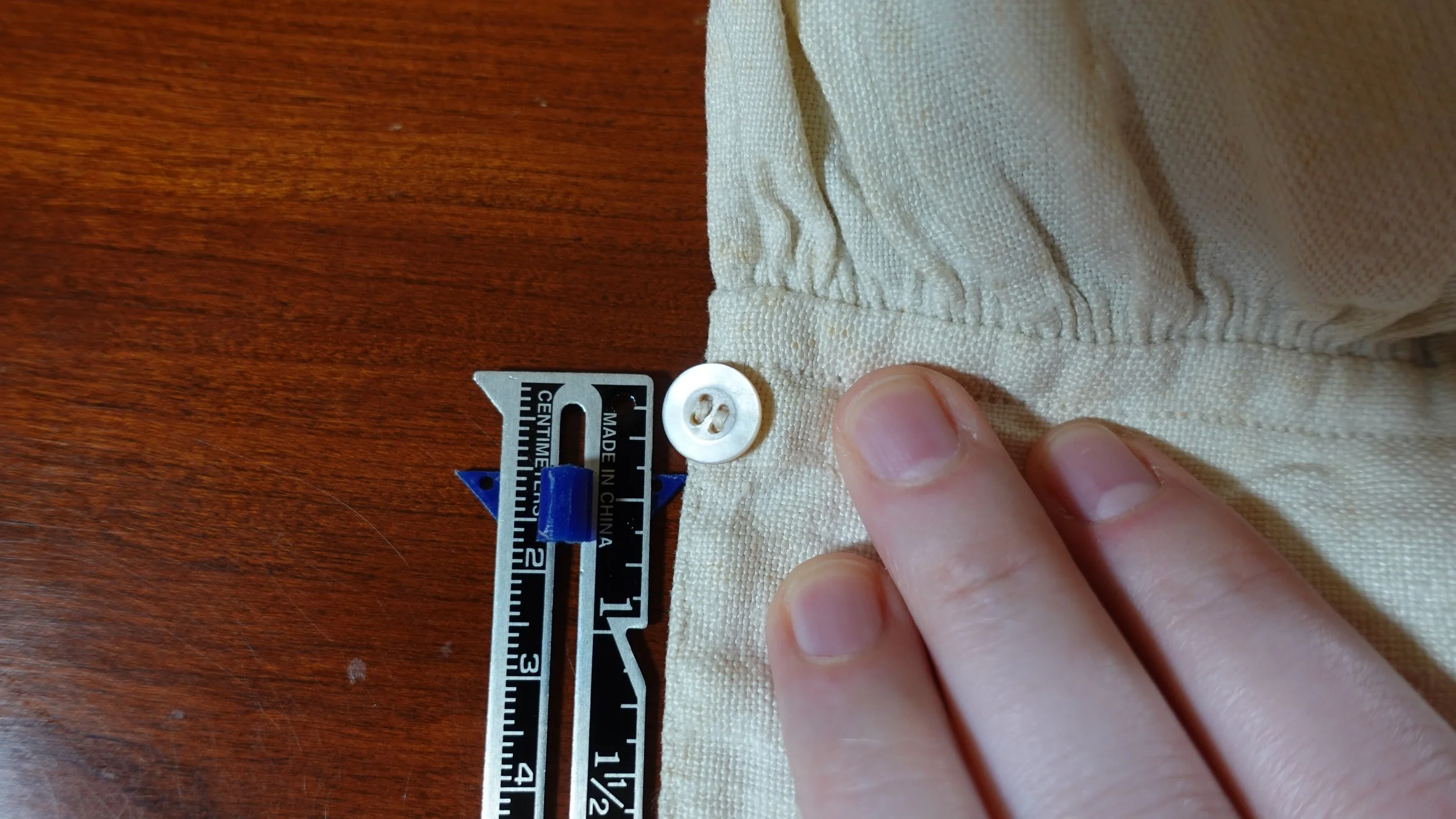Hand-Sewn Historical Shirt Finishing Techniques
In this class you will learn three hand-sewing techniques for finishing off an historical shirt. These details are taken from a historical shirt likely worn c. 1820-1850 in the Atlantic World. We will go over how the buttons and buttonholes are done in this shirt, creating a knot-work re-enforcement stitch at the front slit and making a monogram with cross-stitch. While we are using the historical piece as our guide you can apply these techniques to modern clothing.
Workshop format: This workshop is organized in a series of sections with a pre-recorded, close-captioned video as the key manner of instruction. You are strongly encouraged to watch the video before you start sewing. This class is designed for you to go at your own pace using the pre-recorded videos for instruction. Pause, rewatch and review to hone your seaming skills. The goal of this class is to teach you to hand-sew three finishing techniques that can be applied to both historical and modern garments.
To learn more about your teacher, Sarah Woodyard click here.






